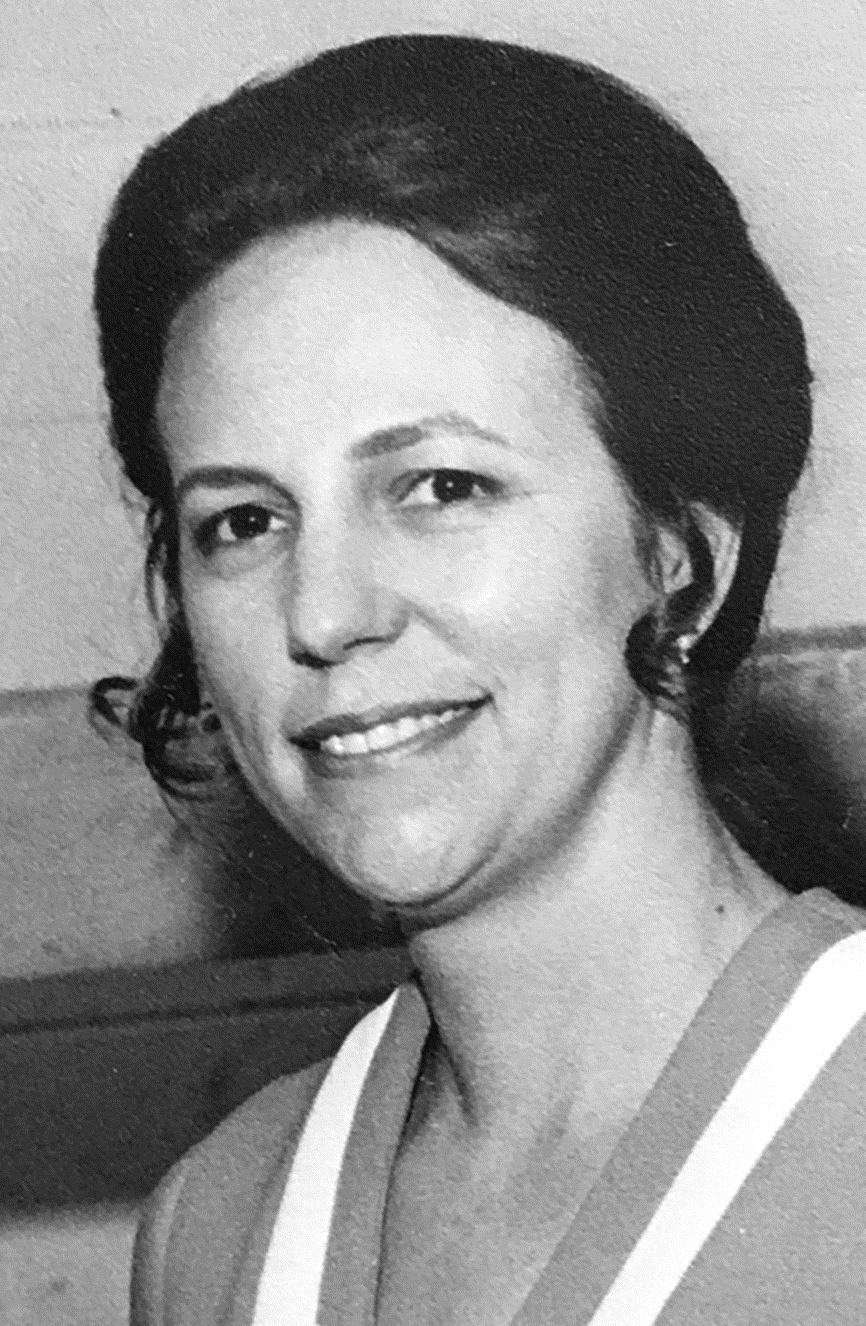Alabama’s ‘first lady of antiques’ dies at 78

During an eventful life, Tuscaloosa's Gray Davis Boone was a publisher, historic preservationist, antiques expert, arts advocate and founder of a Manhattan jewelry store. (Contributed)
When the original British “Antiques Roadshow” first aired, Tuscaloosan Gray Davis Boone had already been feted in national publications from The New York Times to The Washington Post to People magazine as “antique queen of America,” and as “The First Lady of Antiques” for the cover of Delta Airlines Sky magazine.
The antique jewelry dealer, preservationist and publisher was ahead of the curve anticipating public interest in valuable culture, beating the BBC to it by more than a decade. She founded Antique Quarterly in 1967; within 18 months, it was successful enough to bump up to Antique Monthly.
“I became a publisher,” she told People magazine in a 1979 feature, “because nobody was telling me what I really wanted to know about antiques: where the shows were, where the auctions were, where the action was.”
Martha Gray Davis Boone, age 78, who died May 18 at Hospice of West Alabama, built both Antique Monthly and Horizon – an arts publication she acquired from Englehart Hanovia’s American Heritage Publishing Co. in 1978 – into going concerns operating out of Tuscaloosa’s Jemison Van de Graff mansion, rather than the pricey metropolitan digs of other publishers.
The 100,000-circulation Horizon boasted a 16-member advisory board with members ranging from legendary University of Alabama football coach Paul W. “Bear” Bryant to choreographer Agnes de Mille to filmmaker Stanley Kramer. Its illustrious contributors included Ray Bradbury, Alan Rich, Lanford Wilson, Brendan Gill and Robert Joffrey. Famed caricaturist Al Hirschfeld created the October 1981 Horizon cover, an illustration of Stephen Sondheim with his producer Harold Prince, in an issue that featured how 17th-century Dutch painters depicted nature; a dissection of the tale behind Meryl Streep, Harold Pinter and the film adaptation of “The French Lieutenant’s Woman”; and an interview with folk singer and activist Pete Seeger. Nonagenarian Georgia O’Keefe posed for the cover photo of a Santa Fe-themed Horizon issue with her 58-years-younger partner Juan Hamilton.
“You can publish an international publication anywhere,” Boone said in a 1979 interview with The New York Times. She turned Horizon’s fortunes around working with much of the same editorial staff as Antique Monthly, including Kellee Reinhart, who worked with Boone about 15 years, beginning in 1975.
“Gray Boone’s love for antiques and the decorative arts became the cornerstone of a publishing company respected worldwide,” said Reinhart, now vice chancellor for communications and community relations for the University of Alabama System. “Collectors, dealers and arts enthusiasts from New York and Los Angeles to London and Paris followed Antique Monthly and Horizon magazine avidly. Her annual World Antiques and Fine Arts Market Conference in Manhattan was a must-do event on every connoisseur’s calendar.”
Boone wrote a syndicated weekly column, Gray Boone on Antiques, printed in newspapers across the country, and The Gray Letter newsletter, on market trends. Along with Jack Warner’s amassed American art collection, Boone helped place Tuscaloosa on the cultural landscape. Her publications gave young writers, designers, photographers and editors international platforms.
“The work was exhilarating, challenging and, at times, daunting,” Reinhart said. “All of us who were fortunate to earn a byline or take pride in an issue as it rolled off the press are grateful for her vision, energy and passion. Across the country and around the world, the legion of veterans of Gray Boone’s publishing company mourn her loss. She was one of a kind.”
Absorbing the past’s appeal
Boone’s love of antiques arose early. Born in Baytown, Texas, in 1938, she absorbed the past’s appeal in her grandmother’s pre-Revolutionary War plantation in Ashland, Virginia.

Gray Davis Boone made her mark publishing Antique Monthly and Horizon out of a Tuscaloosa mansion. (Contributed)
“When I was 5 years old my grandmother would allow me to sit on the floor and play with her jewelry collection if I had been good,” she said in an interview with a New York City jewelry writer in 2014. “So I believe it is in my blood.”
She met James Buford Boone Jr., publisher of the newspaper in Baytown, married and moved with him to Suffolk, Virginia, when he became publisher of The Suffolk News-Herald, according to son Kenneth Boone, chairman of Tallapoosa Publishers Inc. in Alexander City. Suffolk is where Antique Monthly began. The Boones moved to Tuscaloosa when he bought The Tuscaloosa News, formerly owned and operated by his grandfather James Buford Boone Sr., who won a Pulitzer Prize for the front-page editorial “What a Price for Peace,” criticizing UA’s handling of Autherine Lucy’s integration attempts.
Publishing carried over to the home, Kenneth Boone said.
“I remember literally laying out magazine pages on our kitchen table, when I was a little kid,” he said. “She was a very capable, very passionate person. If she set her mind on doing something, it pretty much got done. I think she just made it happen by force of will.”
A Southerner in New York
Though Boone moved out of publishing in 1989, selling Antique Monthly to Atlanta’s Billian Publishing Inc., and closing Horizon, she continued to actively pursue, appreciate and restore antiquarian beauty. She kept a home in Tuscaloosa, where she’d earned her bachelor’s in interdisciplinary journalism and commerce from UA in 1975, but lived and worked often in New York City, establishing antique jewelry store Gray & Davis in the middle of New York City’s Diamond District in 1999, forging inroads to a field considered a boys’ club. Gray & Davis relocated last year to Manhattan’s West Village, two years after Boone retired. The store’s site described its founder as “a petite Southern woman with a whole lot of brass.”
“We also toyed with the word ‘chutzpah,’” said Ali Miller, laughing. Now a co-owner of Gray & Davis, Miller described Boone as a warm and knowledgeable mentor who she met several years back through a shared jeweler.
“Gray gave me a stack of books to read, and said, ‘Come back next week.’ I knew jewelry, but didn’t know antiques,” Miller said. Boone’s personality shone in always positive and forthright dealings, though “she was New York through and through; I think she had a charming elegance about her because she was Southern.”
“She kept that (Southern) accent. We had to ask for translations sometimes,” Miller said. Overhearing Boone say of someone “Bless her heart,” Miller replied “Oh, that’s so nice.” Boone responded, “No, no, no.”
Even though Miller and two other associates were in their 20s and 30s, they had no trouble relating to Boone, in her 70s.
“She was so warm and positive, even when she was telling someone to go take a hike, they didn’t know,” Miller said. “I still ask myself: ‘What would Gray do in this situation?’”
A diverse career
Boone renovated historic homes in and around Tuscaloosa, priding herself on decorating with antiques often bought for as little as $35. By 41, she served on a dozen boards, including New York’s prestigious Circle Repertory Theatre, and South Central Bell Telephone Co., the first woman chosen for that post. She served on the first board for the Tuscaloosa County Historical Preservation Authority, later becoming its chairwoman.
The National Trust for Historic Preservation gave her its Gordon Gray award in 1978 for outstanding achievement in support of preservation, presented by Cecil Andrus, secretary of the U.S. Department of the Interior. In March 1979, the city of Tuscaloosa honored her with Gray Boone Day. In 1986, she was given both UA’s Society for the Fine Arts’ Patron of the Arts Award, and a Governor’s Arts Award in Montgomery. Her numerous affiliations ranged from Colonial Williamsburg to the Committee for Decorative Arts at the Cooper-Hewitt Museum to the Royal Society of Arts in London.
Boone felt people as a whole were moving toward appreciation of true value. On the other hand, in the People interview, she said, “Junk is junk, even if it is 100 years old.”
Of her diverse career, she added, “My biggest fault is that I can’t decide what I want to do in life.”





